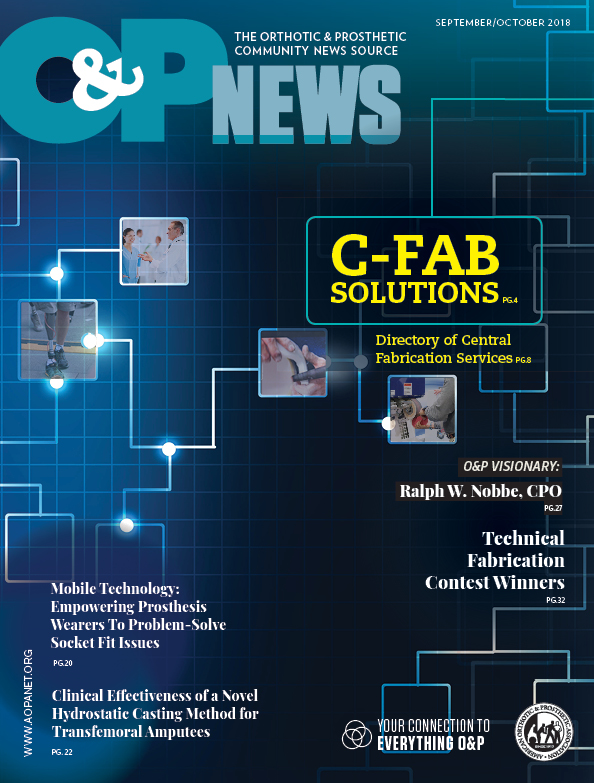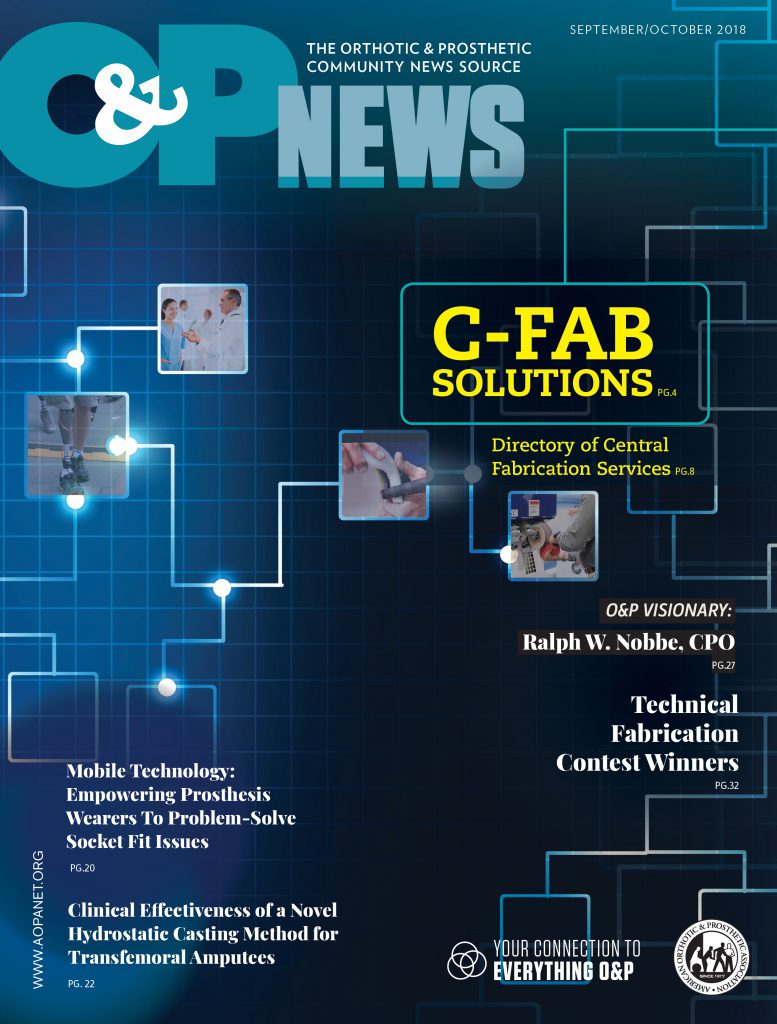 C-Fab Solutions
C-Fab Solutions
Tips for utilizing central fabrication in your clinical practice to enhance your operations
By Renee Lewis, BSE, CO, CPA
Central fabrication (c-fab) facilities are an excellent resource for fulfilling the custom fabrication needs of orthotic and prosthetic clinicians. Some O&P clinics rely heavily on c-fab facilities as part of their core business model. Others use c-fab as an overflow option when they are unusually busy or have staff on leave or vacation. More and more clinics are exploring how incorporating a c-fab facility into their business model can help keep their overhead costs down while giving practitioners more time to spend directly interfacing with patients and referral sources.
Whatever your clinical model, following are a few tips for practitioners and technicians working with a c-fab facility.
It Isn’t All or Nothing
Every clinic must decide what model best suits its size, patient-care philosophies, and bottom line. The great news about c-fab is that it isn’t an all-or-nothing solution. Most c-fab facilities are ready and able to take on only the steps of the fabrication process with which you require assistance.
For example, some clinicians make their own test sockets in house then utilize a c-fab facility for fabrication of the definitive device. Some clinicians use the CAD/CAM capabilities of a c-fab facility to fabricate test sockets, and then they or their in-house technicians fabricate the definitive prosthesis. Others who want to move away from using plaster in their office without letting go of any in-house fabrication use scanning technology to capture and modify the limb or residual limb shape. A c-fab facility can then carve a foam model for the clinic to use in fabrication.
If there is even part of the fabrication process you feel doesn’t need to be performed in house, there is certainly a c-fab facility that will be able to fulfill your needs.
What’s With All of the Questions?
It would be ideal if all work orders took only a few minutes to fill out, and sometimes practitioners try to save time by only including the information they feel the c-fab facility needs. However, if a measurement or question is on that c-fab’s work order, it means the fabrication team feels this information is important in order to create the most accurate device with the best fit and function. You will give the c-fab a better chance of being successful for you if you submit all of the requested measurements and information.
You may wonder why a c-fab technician needs measurements when you also send them a cast or scan. Although you have provided an exact model of your patient’s limb or residual limb, appropriate measurements are critical for verification of the model. Most casts are transported without any issues, but a few important measurements will help verify the shape has remained intact during shipping. This verification also is important for digital information such as scanning. While this technology captures the shape of a limb or residual limb, the actual size of the model is subject to some small margin of error in the scanning process. This can be caused by the calibration of the scanner, the skill and experience of the practitioner with the technology, or simply the technology itself. Again, key measurements can help the c-fab team verify the model for complete accuracy before fabricating a custom device.
Measurements also can be used to help troubleshoot the cause of an ill-fitting device. Things can go wrong in the fabrication process, but practitioners who work with growing pediatric patients and adults with fluctuating shapes also know that a shape that was accurate at the time of casting may not be accurate at the time of fitting. Comparing measurements from a casting appointment to measurements at a fitting appointment helps determine if there was an issue in the fabrication process or if there was a physical change to the patient before the device was fit.
All of these measurements and questions may seem to simply take up time in a patient evaluation appointment, but they often will save you time in the long run. Not having all of the necessary information on hand in the beginning can result in extra time needed to call your patient back in for additional evaluations or result in extra time in the fitting of the device if modifications need to be made.
Communicate, Communicate, Communicate
Even though c-fab staff members aren’t located in your physical building, they are still on your team—and they are eager to make the best devices for your patients. If you have questions about anything—from the order form to the process—call or email the c-fab staff and ask. If you have very specific ways you want something fabricated, from components to trimlines, don’t be shy about communicating these specifications to the team.
C-fab technicians also are an excellent resource for practitioners designing less common or unique devices. These technicians see devices from a variety of clinics, and they may have just the tip or technique you need to solve a complicated issue. Use your team, and call on their knowledge to help you solve complex issues or utilize new components and technologies.
Outsourcing to central fabrication can serve as a useful tool, allowing practitioners and technicians to use their time and skills more efficiently in a patient-care setting. Just like any other tool, using c-fab properly can lead to better outcomes for clinics and their patients.
Renee Lewis, BSE, CO, CPA, is director of clinical solutions for Friddle’s Orthopedic Appliances, Inc.


